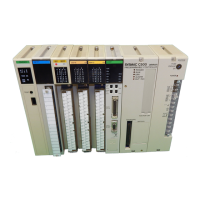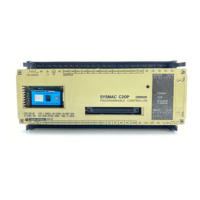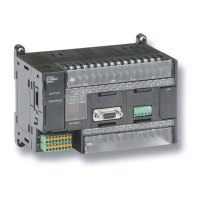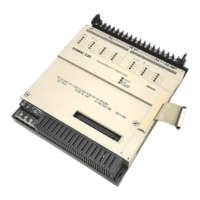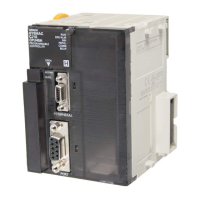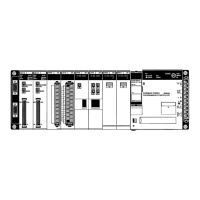65
Output Surge Current When
connecting a T
ransistor or T
riac Output Unit to an output device having
a
high
surge current (such as an incandescent lamp), care
must be taken to avoid
damage
to the Output Unit. The T
ransistor and T
riac Output Units are capable of
withstanding
a surge current of ten times the rated current. If the surge current
for
a particular device exceeds this amount, use one of the following circuit con
-
figurations to protect the Output Unit.
OUT
COM
L
R
+
The
above circuit protects the Output Unit by letting the load draw
a small current
(about
one third the rated current) while the output is OFF
, significantly reducing
the
surge
current. The following circuit reduces the surge current by employing a
current-limiting resistor.
LOUT
COM
+
R
A Transistor Output Unit’s output cannot be directly connected to a TTL input
because of the transistor’s residual voltage. When connecting TTL circuits to
transistor
Output Units, connect a pull-up resistor and a CMOS IC between
the
two.
3-5-3 Wiring Examples
The
following examples illustrate
how to connect I/O devices to I/O Units. During
wiring, work slowly and carefully. If an input device is connected to an Output
Unit,
damage may result. Check all I/O devices to make sure they meet the spec
-
ifications
(refer to
Appendix B Specifications
). Be sure to allow for leakage cur
-
rents and load inductance.
Input Units
DC Input Units
COM
Contact
output
IN
DC input
Transistor Output Residual
Voltage
Wiring I/O Units Section 3-5

